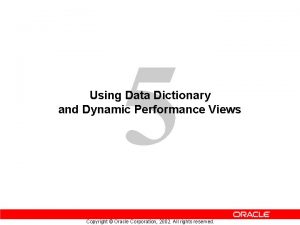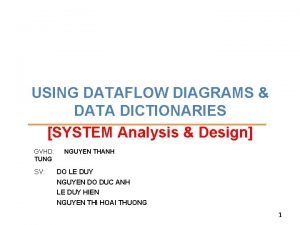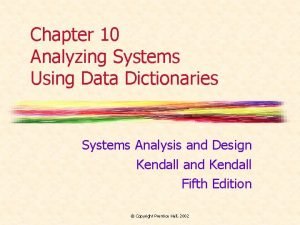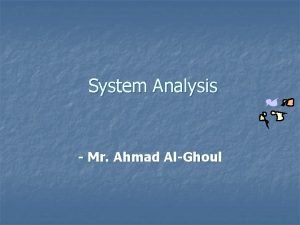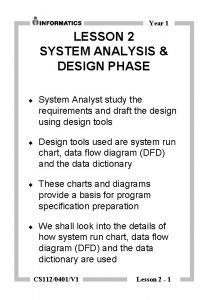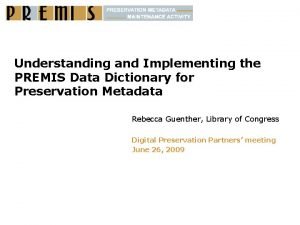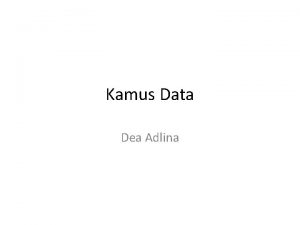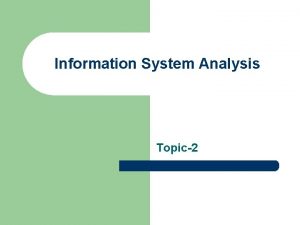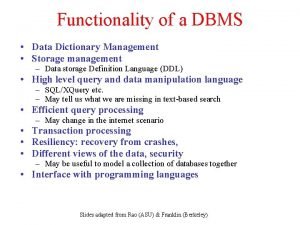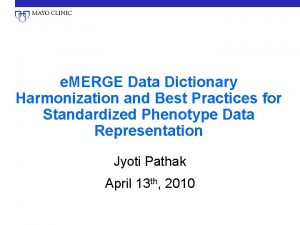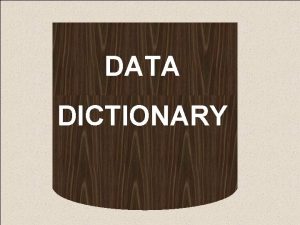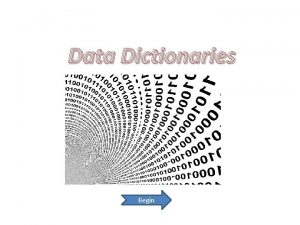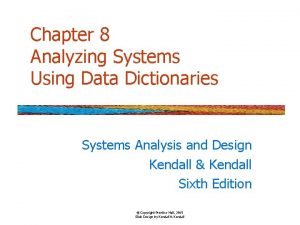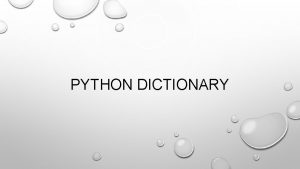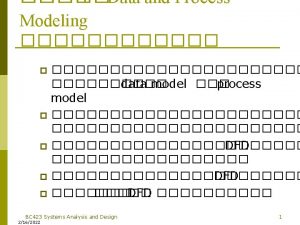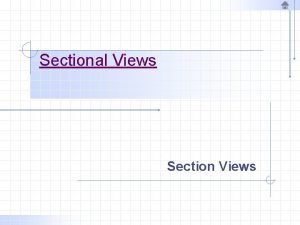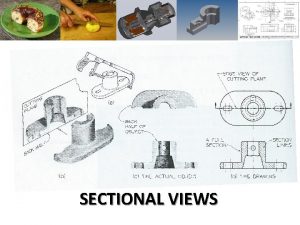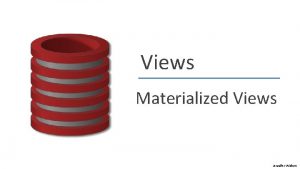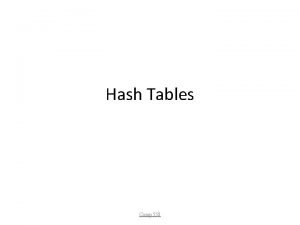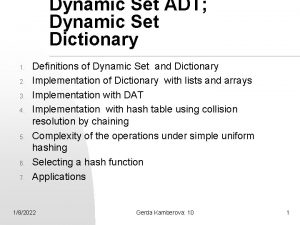5 Using Data Dictionary and Dynamic Performance Views
















- Slides: 16

5 Using Data Dictionary and Dynamic Performance Views Copyright © Oracle Corporation, 2002. All rights reserved.

Objectives After completing this lesson, you should be able to do the following: • Identify built-in database objects • Identify the contents and uses of the data dictionary • Describe how data dictionary views are created • Identify data dictionary view categories • Query the data dictionary and dynamic performance views • Describe administrative script naming conventions 5 -2 Copyright © Oracle Corporation, 2002. All rights reserved.

Built-In Database Objects Other objects created with the database: • Data dictionary • Performance tables • PL/SQL packages • Database event triggers 5 -3 Copyright © Oracle Corporation, 2002. All rights reserved.

Data Dictionary • • Central to every Oracle database Describes the database and its objects Contains read-only tables and views Stored in the SYSTEM tablespace Owned by the user SYS Maintained by the Oracle server Accessed with SELECT Data files Control Redo files Log files Database Data Dictionary tables 5 -4 Copyright © Oracle Corporation, 2002. All rights reserved.

Base Tables and Data Dictionary Views The data dictionary contains two parts: • Base tables – Stores description of the database – Created with CREATE DATABASE • Data dictionary views – Used to simplify the base table information – Accessed through public synonyms – Created with the catalog. sql script 5 -5 Copyright © Oracle Corporation, 2002. All rights reserved.

Creating Data Dictionary Views Script Purpose catalog. sql Creates commonly used data dictionary views and synonyms catproc. sql Runs scripts required for server-side PL/SQL 5 -6 Copyright © Oracle Corporation, 2002. All rights reserved.

Data Dictionary Contents The data dictionary provides information about: • Logical and physical database structures • Definitions and space allocations of objects • Integrity constraints • Users • Roles • Privileges • Auditing 5 -7 Copyright © Oracle Corporation, 2002. All rights reserved.

How the Data Dictionary Is Used Primary uses: • Oracle server uses it to find information about – Users – Schema objects – Storage structures • Oracle server modifies it when a DDL statement is executed. • Users and DBAs use it as a read-only reference for information about the database. 5 -8 Copyright © Oracle Corporation, 2002. All rights reserved.

Data Dictionary View Categories • Three sets of static views • Distinguished by their scope: – DBA: What is in all the schemas – ALL: What the user can access – USER: What is in the user’s schema DBA_xxx All of the objects in the database ALL_xxx Objects accessible by the current user USER_xxx Objects owned by the current user 5 -9 Copyright © Oracle Corporation, 2002. All rights reserved.

Data Dictionary Examples • General overview: DICTIONARY, DICT_COLUMNS • Schema objects: DBA_TABLES, DBA_INDEXES, DBA_TAB_COLUMNS, DBA_CONSTRAINTS • Space allocation: DBA_SEGMENTS, DBA_EXTENTS • Database structure: DBA_TABLESPACES, DBA_DATA_FILES 5 -11 Copyright © Oracle Corporation, 2002. All rights reserved.

Dynamic Performance Tables • Virtual tables • Record current database activity • Continually updated while the database is operational • Information is accessed from memory and control file • Used to monitor and tune the database • Owned by SYS user • Synonyms begin with V$ • Listed in V$FIXED_TABLE 5 -12 Copyright © Oracle Corporation, 2002. All rights reserved.

Dynamic Performance Examples • • • 5 -13 V$CONTROLFILE V$DATABASE V$DATAFILE V$INSTANCE V$PARAMETER V$SESSION V$SGA $SPPARAMETER V$TABLESPACE V$THREAD V$VERSION Copyright © Oracle Corporation, 2002. All rights reserved.

Administrative Script Naming Conventions 5 -15 Convention Description cat*. sql Catalog and data dictionary information dbms*. sql Database package specifications prvt*. plb Wrapped database package code utl*. sql Views and tables for database utilities Copyright © Oracle Corporation, 2002. All rights reserved.

5 -16 Copyright © Oracle Corporation, 2002. All rights reserved.

Summary In this lesson, you should have learned how to: • Identify built-in database objects • Identify the contents and uses of the data dictionary • Describe how data dictionary views are created • Identify data dictionary view categories • Query the data dictionary and dynamic performance views • Describe administrative script naming conventions 5 -17 Copyright © Oracle Corporation, 2002. All rights reserved.

Practice 5 Overview This practice covers the following topics: • Identifying the components and contents of the data dictionary • Querying the data dictionary and dynamic performance views 5 -18 Copyright © Oracle Corporation, 2002. All rights reserved.
 Oracle dynamic performance views
Oracle dynamic performance views Flow diagram symbols
Flow diagram symbols Static data structure and dynamic data structure
Static data structure and dynamic data structure Example of data dictionary in system analysis and design
Example of data dictionary in system analysis and design Data dictionary example in system analysis and design
Data dictionary example in system analysis and design What is data dictionary in system analysis and design
What is data dictionary in system analysis and design A dbms separates the logical and physical views of data.
A dbms separates the logical and physical views of data. Transferered
Transferered Premis data dictionary
Premis data dictionary Also known as restrict yields values
Also known as restrict yields values Kamus data dfd
Kamus data dfd Fact finding techniques in system analysis and design
Fact finding techniques in system analysis and design Select product1.* from product1, product2;
Select product1.* from product1, product2; Data dictionary best practices
Data dictionary best practices Data dictionary symbols
Data dictionary symbols Purpose of data dictionary
Purpose of data dictionary Data dictionary in dfd
Data dictionary in dfd
